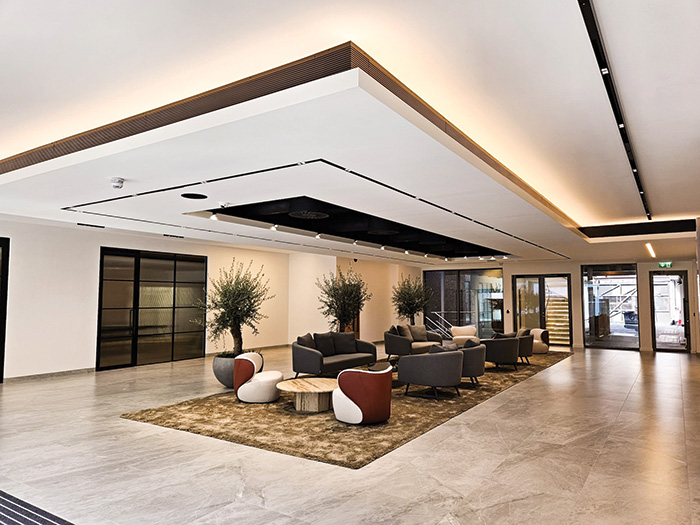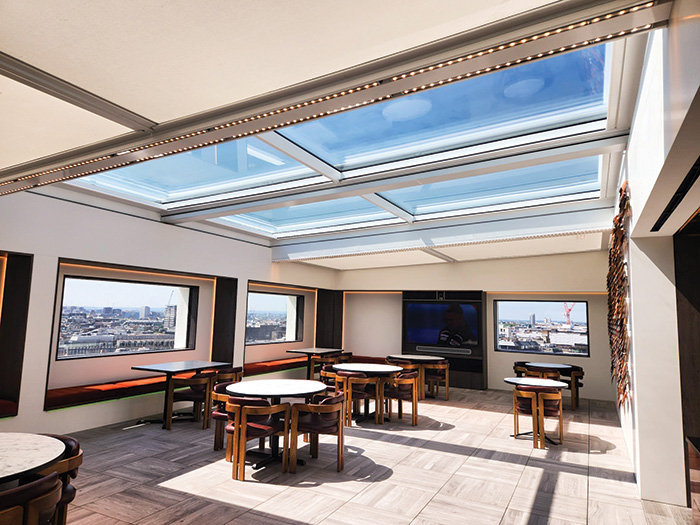Illuminating Smart Buildings

The evolution of lighting systems continue to play a pivotal part in smart buildings, larger and faster drivers and controls allowing for pinpoint accuracy on everything from colour temperature to occupancy monitoring.
DALI‑enabled controllers are able to provide three modes of data collection and communication which enables facilities manager to produce detailed reports on key metrics such as usage, maintenance and testing, making buildings compliant, efficient and smarter than ever.
Over a 30‑year life cycle of a building, 25 per cent of the building’s cost will be accrued in years one to six, while the other 75 per cent racks up within the remainder of its lifetime in the building’s operational phase. RIBA deems this ‘stage 7’ of a building’s lifetime. The integration of smart controllers can reduce energy, work towards net zero carbon goals and enhance asset management through predictive maintenance targeting these high costs and making building’s more cost effective to run and sustainable.
Not only do these controllers provide functionality that makes lighting systems smarter in practice, they can also produce test books, reports and real‑time updates, and this data is the most important gift for facilities managers. After all, knowledge is power. This data can include diagnostics that measure temperature within a luminaire, in order to predict its life cycle. It can also help facilities managers to manage the proactive replacement of components and luminaires before a critical point is reached.
The Need For Innovation

Sensors, controls and drivers that are integrated into the luminaire by manufacturers can be networked – either wired or wirelessly – depending on the preference of the client. This means that wireless retrofit lighting schemes can be added into a building that provide all the same data points and energy saving credentials, without the need for costly rewiring jobs. Wired or wireless integrated systems can provide a choice of communications too, depending on the client’s preference. Hardwiring laptops into the system to download data manually is still a widely accepted method, while these smart systems can also be set up to email reports to the facilities manager – at a time and frequency of their choosing.
The scale of these controllers has also grown exponentially too – allowing for greater interoperability and coverage inside large scale projects. For example, a controller with three DALI‑2 lines can link to 62 separate devices. Equally, these controllers can be networked together, with the option for up to 270 separate controllers to be linked to control and collate data from over 40,000 luminaires and devices.
The intelligence of these controllers lies within the collection and collation of data within themselves, with the ability to alarm on potential failures before they occur. This enables facilities managers to take action before maintenance is required, helping to plan out maintenance schedules and saving valuable man hours and travel time, maintaining lighting systems manually.
Work Smarter, Not Harder

The integration of drivers and controls into building management systems can also be connected to the Cloud for additional insights and used as a basis for the Internet of Things (IoT).
Operational performance can also be addressed in areas such as net zero carbon, remote asset management and people and wellbeing. Utilising lumDATA allows for the data generated at luminaire level to be harvested, interrogated, visualised and shared. These are some of the key strides in lighting controller advancement that are helping buildings to become smarter and facilities managers to have an in‑depth view into the health of their lighting estate.
Click the article to enlarge it.



























































